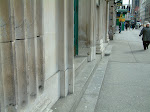What is food borne illness?-A food borne illness is a disease that is transmitted to humans by food.
-The U.S. Public Health Service classifies moist, high-protein, and/or low acid foods as potentially hazardous.
Who's at risk?-Infants, young children, pregnant women, the elderly. Also, people who are chronically ill have a greater risk of developing a food borne illness because their immune system may not be able to fight off bacteria and viruses that cause the illness.
What is cross-contamination?-The transportation of harmful substances to food by: hands that touch food that will not be cooked, such as fresh fruits and vegetables.
-Surfaces, like cutting boards or dish towels, that touch raw foods, are not clean and sanitized, then touch ready-to-eat food.
-Raw or contaminated foods that touch or drip juices on cooked or ready-to-eat foods.
-Food can become contaminated from chemical, physical, or biological sources.
-Chemical hazards = cleaning solutions and sanitizers
-Physical hazards = foreign particles, like glass or metal
-Biological hazards = mainly produced by microorganism including viruses, parasites and bacteria
Conditions that encourage bacteria to grow
-Bacteria can live in hotter and colder temperatures than humans, but they do best in a warm, moist, protein-rich environment that is pH neutral or low acid.
-There are some exceptions; some bacteria thrive in extreme heat or cold.
-Some bacteria grow fastest in the temperature range between 41F (5C) and 140F (60C), which is known as the Temperature Danger Zone “TDZ”.
Handling food safely
-Food handling practices are risky when they allow harmful bacteria to contaminate and grow in food
-Your hands can be the most potentially dangerous serving equipment you use.
-Scratching you scalp, running your fingers through your hair, or touching a pimple can cause the transmission of pathogenic microorganisms that may cause disease
-If you touch a food during preparation, you may transfer several thousand bacteria to its surface
-A cough or sneeze can transmit thousands of microorganisms that may cause disease.
-The most important tool you have to prevent food borne illness is good personal hygiene.
-Personal hygiene is the way a person maintains their health, appearance and cleanliness.










